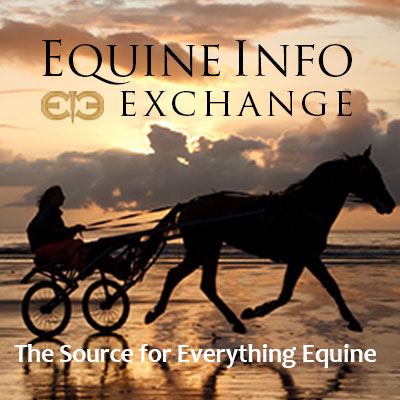Riding Disciplines
Welcome to Riding Disciplines which covers every English and Western riding style! The English riding covers Dressage, a ballet on horseback, Driving which features both the beautiful horses and the carriages they pull, Foxhunting, Eventing, Jumping, Saddle Seat, and even the sport of Polo.
The Western riding category includes Pleasure, Reining and all Rodeo events involving a horse, so look for Barrel Racing, Bronc Riding, Chuck Wagon Racing, Cutting, Pole Bending and Roping.
Want to know the date of your favorite horse show or rodeo? Don’t miss it! Dates and locations are included in the in both the Calendar of Events for English Riding and the Calendar of Events for Western Riding. Are we missing a category or event? Please use the useful feedback link and let us know!
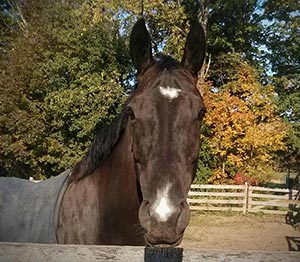
by Kathy Farrokhzad
You might have liked horses all your life.
Or you might have had an awakening not too long ago that is urging you to explore horseback riding for the first time.
You can't tear your eyes away from the sight of glowing coats and rippling muscles.
You get excited every time you drive by horses in a field.
Contrary to your friends, you even like the smell of a barn!
And now, you know you are ready to take the first steps on the long road of becoming an equestrian. You've booked riding lessons at a local barn and you are convinced that you are ready to tackle the learning curve that lays ahead. Before you begin, here are nine tips to smooth the way into your new adventures!
1. Be prepared to be a beginner - for a long time!
Once you step into that stirrup for the first time, forget all about instant gratification. Instead, get all pumped up for the accomplishment of doing something for the long term.
Don't worry if your fingers fumble when putting on the bridle. Have no worry when the horse gives you a knowing look out of the corner of his eye: "This one is a beginner!" Just take the plunge into new feels, new learning curves and new coordination. It's all about the joys (and challenges) of being on the path.
2. Every horse has something to teach you.
Read more: 9 Things You Need to Know if You Want to Ride Horses
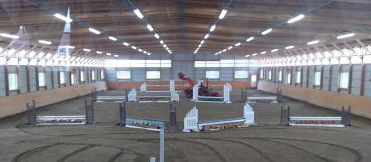
by Jessica Roberts
As the owner of a boarding farm, I am often the one who is setting up courses. When you’re putting a course together, a lot of variables are taken into consideration, such as the ring size and the number of jumps you have. Now that we’ve covered the basic guidelines for setting up a typical hunter course, we’re going take the hunter course that we built last time, adjust it a bit, and use it to build some “equitation” courses that can be practiced at home. Many times, I’ve seen smaller horse shows have a basic hunter course and use it, or slightly modify it to also be used for equitation classes.
Most shows will include at least two of the following parts to be built into an equitation course:
• Bending line
• Narrow jump
• Roll back turn
• End fence
• Long approach to a single
• Combination
Here, I’ll walk you through these different pieces:
A bending line is just that – it’s a set of two fences that are setup up so that the path between them has a bend in it. One can either “step out” and ride an outside track to add a stride – or they can “stay in” and ride an inside track for a more direct path. A lot of times the inside track has the rider jumping one or both of the fences at an angle to help with the direct line.
A narrow jump is a jump that is shorter than normal from side to side. The normal width of a jumps is 10 to 12 feet, but a narrow jump is 6 to 8 feet. Sometimes it’s all called a “skinny”.
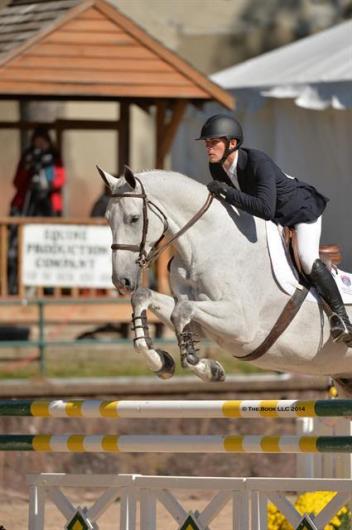
Geoffrey Hesslink was launched into the spotlight when he topped the 2014 Platinum Performance/USEF Talent Search Finals East on Peacock Ridge LLC’s Canny Windsor Z. He impressed the judges throughout all phases of the competition and earned top scores during the testing where the competitors had to switch mounts.
It was Geoffrey’s first national title and a fantastic way to close out his junior riding career. Even now as Geoffrey has continued on to become a budding young professional, the win remains close to Geoffrey’s heart.
“My biggest accomplishment up to this point is when I won the 2014 USEF Platinum Performance Talent Search Finals. This holds a special place in my heart because winning an equitation final was my ultimate junior career dream,” he said. “I worked tirelessly day in and day out for years to accomplish this goal and when it finally all paid off it really felt like the ultimate dream come true.”
Since then, Geoffrey has clinched some other admirable titles such as earning the 2016 Hallway Feeds Leading Professional Rider Award, being the WCHR regional Developing Professional Champion and Reserve Champion at Capital Challenge, being USHJA year-end regional National Hunter Derby Champion for Zone 5 and overall Reserve Champion in the National Hunter Derbies.
Read more: Up & Coming Young Professional: Geoffrey Hesslink
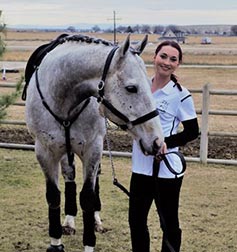
by Eric Mitchell
Show horse trainer Stevee Keller didn't realize a casual conversation about Thoroughbred pedigrees she favored would lead to her owning her first stallion and a rising star in the world of three-day eventing.
Keller had been talking with Adrian Gonzalez, with Checkmate Thoroughbreds, who she attends sales with in California. Gonzalez asked her if she had a preference for particular bloodlines.
"I told him the one that is really up-and-coming are with The Pamplemousse babies," Keller recalled Jan. 31, referring to the grade 3-winning son of Kafwain who was standing at Rancho San Miguel. "I have, like, four that are on their way to becoming two-star, three-star, almost up to Olympic level, three-day eventing horses. Adrian just laughed."
It so happened that Gonzalez handles the sale consignments for Rancho San Miguel's young horses and knew the farm wanted to find a new home for the big gray 12-year-old horse.
Read more: Career in Three-Day Eventing for The Pamplemousse
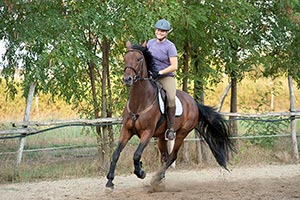
And a Solution to Help Curvy Women! by Bonnie Marlewski-Probert
I received a letter asking for help fixing two problems: 1. Learning to sit at the canter and, 2. Stop coming so high out of the saddle over fences. The good news is that both problems can be fixed, and the better news is that both problems often originate from the same sources. So, if we fix one, we will often times fix the other problem at the same time.
Here are some tips that will help you solve both problems:
- Sometimes, the easiest way to fix a problem is to ask yourself this question; IF I wanted to CAUSE both of these problems, how could I do that? The simple answer is, I could do that if I shortened up my stirrups. Let’s look at an extreme example to make the point. Have you ever seen a jockey’s stirrup length when they are racing? Their knees are way above the back of the horse and the jockey rarely touches the seat of the saddle as a result. Using this example as the extreme, I would recommend that you first try lowering your stirrups just one hole on each side and see what the results are. Very often in life, the most difficult problems have the easiest answers.
- America’s Most Wanted Thoroughbred, Old Tavern, a Brave Polo Pony with Nerves of Steel
- A Horse With a Different Gear
- When Two Spines Align: Dressage Dynamics
- Three Secrets to Show Ring Success
- My Memorable Mentor
- North American Western Dressage gets punchy with Ranch Horse Western Dressage tests
- Jennifer Malott Kotylo - Movement & Body Awareness Specials for Equestrians, Introductory Video (1:33)
- Mario Dino Di Salvo at the Saratoga Polo Club
- Exercises for Horses That Are Beginning Pole Bending
- Zara Phillips targets Olympic gold with baby Mia by her side
- OMR Sisters Gallop to Glory
- Horse Carriage Driving Enthusiasts Compete on Brean Beach
- Navajo Barrel Racer Is Saluted With ‘Kassidy Dennison Day’ in New Mexico
- Reining: Boemil Twin Robotop - the only Appaloosa in the Individual Finals
- Boyd Martin Sets Record at Jersey Fresh International Three Day Event







